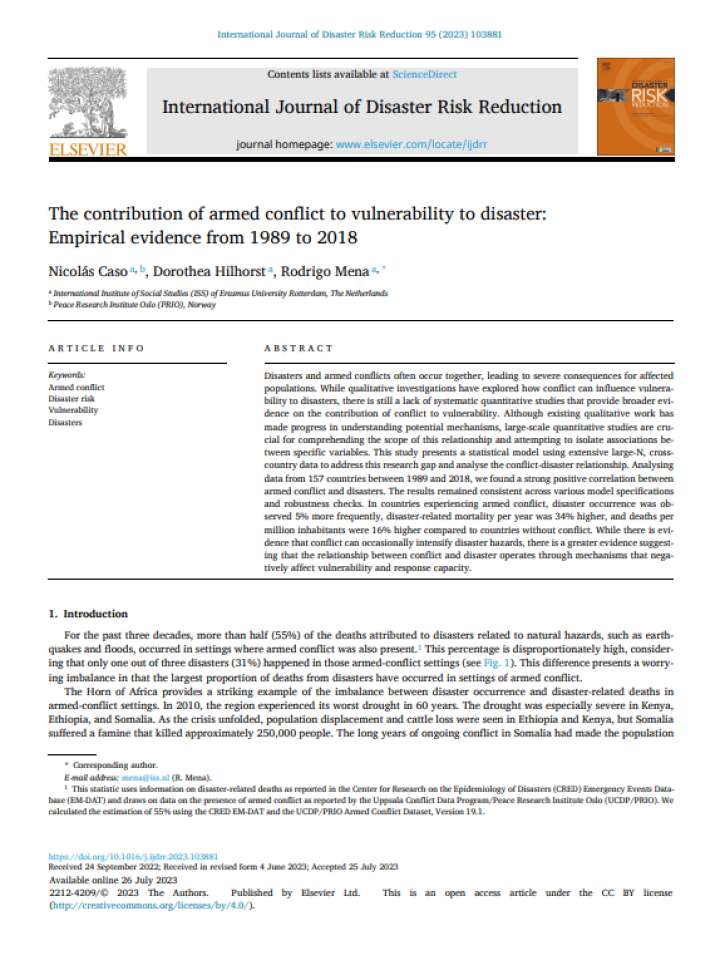The contribution of armed conflict to vulnerability to disaster: Empirical evidence from 1989 to 2018
This study presents a statistical model using extensive large-N, cross-country data to address this research gap and analyse the conflict-disaster relationship. Disasters and armed conflicts often occur together, leading to severe consequences for affected populations. While qualitative investigations have explored how conflict can influence vulnerability to disasters, there is still a lack of systematic quantitative studies that provide broader evidence on the contribution of conflict to vulnerability. Although existing qualitative work has made progress in understanding potential mechanisms, large-scale quantitative studies are crucial for comprehending the scope of this relationship and attempting to isolate associations between specific variables.
Analysing data from 157 countries between 1989 and 2018, we found a strong positive correlation between armed conflict and disasters. The results remained consistent across various model specifications and robustness checks. In countries experiencing armed conflict, disaster occurrence was observed 5% more frequently, disaster-related mortality per year was 34% higher, and deaths per million inhabitants were 16% higher compared to countries without conflict. While there is evidence that conflict can occasionally intensify disaster hazards, there is a greater evidence suggesting that the relationship between conflict and disaster operates through mechanisms that negatively affect vulnerability and response capacity.
Explore further
